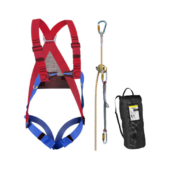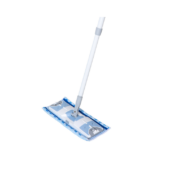Introduction:
In today’s fast-paced corporate climate, procurement efficiency may greatly effect firm performance. Procurement, formerly paper-based, now offers digital alternatives that streamline and improve processes. This blog discusses how procurement technology and tools may enhance efficiency, cut costs, and alter procurement operations.
What Procurement Technology Offers
Many US firms are using procurement technology to automate processes and boost profits.
Beyond this, the technology boosts supply chain productivity, transaction visibility, accountability, and cost efficiency.
Bain & Company found that less than 10% of organisations use Internet of Things, Big Data, and blockchain procurement solutions.
According to the same data, over 60% of organisations utilise no tools or Microsoft Office-based solutions for workflow and supplier relationship management.
Information exchange, category management, stakeholder management, and risk management increase the percentage to above 70%.
Microsoft Office offers many important tools for operating a business, but procurement is not one of them since it does not allow real-time cooperation.
That’s a huge wasted opportunity for firms, especially small ones with minimal funds.
Procurement Leaders found that fully automated procurement could save the Global 5000 $86 billion yearly. Companies spending $1 billion to $3 billion might save $12 million on procurement staff. The average $3 billion spender saves $27 million on personnel.
As they experiment with new tools, businesses are seeing the benefits of digital procurement.
Capital investors are spending heavily in the development of these digital procurement systems, believing they will add value to users. Total global investment in these instruments, including venture capitalists, was $475 million in 2017, up from $378 million in 2014.
Low entry barriers and more investment have led to new technology on the market.
If your company hasn’t switched to e-procurement solutions to streamline procurement, selecting the proper one might be beneficial.
Procurement Technology & Tools Benefits
Lower Costs and Better Spend Visibility
Digital procurement lets you arrange spend among providers and track it centrally.
Spend analytics helps you uncover cost-cutting possibilities consistently and utilise volume to minimise costs.
You’ll also be better at risk management, contract compliance, vendor tracking, and supplier scorecards, which boosts efficiency and savings.
A unified database simplifies reporting on requisitions, purchases, orders, and invoice payments.
Your business’s divisions that order and receive the most items, keep within expenditure limitations, etc. may be clearly seen.
This data helps you make better decisions and balance your company’s demands with its expenses.
World-wide procurement
Your organisation can simply obtain goods and services from around the world using procurement solutions that handle numerous currencies, languages, and logistics.
Internet-based procurement systems link you to global sources, expanding your product, service, and supplier options.
Improved Operations
E-procurement technology automates several internal operations, including supplier appraisal and purchase order tracking, making your organisation more efficient.
The more you can accomplish without humans, the less chance of expensive mistakes. The more you can do without a person, the more time people have for strategic sourcing and contract management.
Workflow Standardisation
Electronic procurement technology standardises operations and decreases deviations, improving process efficiency.
Moving your system online lets you quickly access vendor contact information, contracts, orders, and supplier quotes.
Transactions are routed through the proper channels and approved to place orders with the right vendors under the existing contract conditions and prevent off-contract acquisitions.
Easy Procedures
Electronic document storage in procurement technology streamlines several operations.
Due to their accessibility, reusable templates reduce engagement turnaround time. The system stores contracts and orders, making older records easier to retrieve.
This accelerates contract compliance inspections and reduces errors.
Automating procure to pay (P2P) with procurement software streamlines the process.
Paying vendors on time allows for strong working relationships and potential savings.
A repository stores invoices and orders for easy access and recording.
More accurate data using procurement technology
Electronic data processing streamlines and reduces errors.
To eliminate data inaccuracies and assure contract compliance, your document repository is conveniently accessible.
Because everything in the procurement system is transparent, you can follow who is doing what.
Everyone is responsible, and data integrity is maintained.
You can see who issued a requisition, who accepted it and made it a buy order, who approved the purchase order, when the vendor received it, etc.
After receiving an order from the vendor, it may be declared received, sent to the original requestor, and the invoice paid because everything is connected.
If the item is damaged, inaccurate, or no longer needed, the system simplifies returns.
Most procurement programs save all records, so earlier transactions may be searched but archived to avoid blocking more current transactions.
Integrating procurement technology Internally
Integrating an electronic buying system throughout your organisation allows internal departments to interact more efficiently and decrease asymmetrical information.
Creating a standardised approval procedure and formal workflow lets every transaction be authorised properly.
For example, Sally can purchase a new keyboard but not servers or email marketing suppliers for the firm because she doesn’t have the power.
Integration across all internal departments guarantees that everyone gets what they need when they need it without having to contact procurement.
Digitised Catalogues
Buyers may see more goods and prices using electronic catalogues.
More vendors are offering standardised products as these catalogues grow more popular, making it easy to compare apples to apples and obtain the best value.
A specific number of authorised goods from these catalogues can be added to the system by procurement teams.
After that, anybody with the power to order products for themselves or their department may utilise a requisition and online ordering system to request them, gain staff approval, and get them.
This allows procurement organisations to focus on strategic sourcing and supplier relationship management instead of low-value transactions like paper and printer ink.
Companies need a fully integrated e-procurement approach that covers requisition and approval hierarchies, order processing, invoice payment, and supplier information including RFIs, contracts, and performance records for maximum success.
It may take many ERP modules to create an end-to-end system, but switching only portion of it to electronic technology won’t be as beneficial.
Moving to an e-procurement system takes time, money, and effort, but cost reductions are usually worth it.
Spending money on procurement tools and technology will boost productivity for your firm.
Workflow changes nearly immediately with enhanced efficiency. Long-term cost reductions allow you to focus more on strategic strategies to build the firm.
Conclusion:
In conclusion, procurement technology and solutions save costs, improve expenditure visibility, and boost global procurement and operational efficiency. Businesses may improve vendor connections, streamline operations, and reduce mistakes by using digital solutions. E-procurement solutions involve investment and effort, but the long-term productivity and cost reductions are worth it. Investing in the proper technology may enhance procurement and boost corporate performance.

















